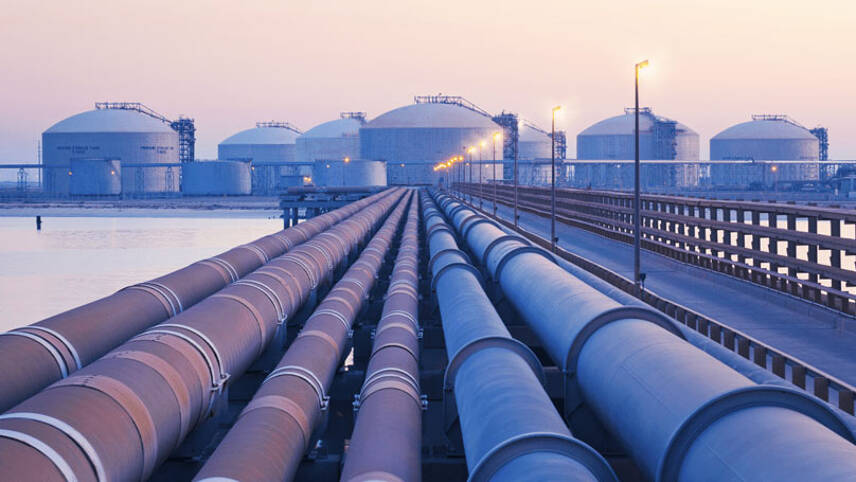Register for free and continue reading
Join our growing army of changemakers and get unlimited access to our premium content

Image: Saudi Aramco
Conducted by InfluenceMap, the assessment exposes the emissions footprints of 117 coal, oil, gas and cement producers listed in the ‘Carbon Majors’ database.
Originally published in 2013 and then updated in 2017, using data reaching back to the mid-1800s, the database identified the world’s largest historic emitters and has been used as a key tool to attribute responsibility for climate change to national governments and large, investor-owned fossil fuel firms.
InfluenceMap has stated today (4 April) that these companies were collectively responsible for 88% of global CO2 emissions between 2016 and 2022 – the first seven years of the existence of the Paris Agreement. Most of these emissions (80%) were attributable to a smaller base of 57 entities.
The majority of these firms increased their fossil fuel or cement production in this period. 65% of the state-owned companies and 55% of the investor-owned companies showed higher production in 2016–2022 than in 2009–2015.
InfluenceMap has named a mix of state-owned and investor-owned companies as among the worst offenders in terms of their recent emissions footpring. The five highest emitters between 2016 and 2022 were all state-owned – Saudi Aramco, Gazprom, Coal India, the National Iranian Oil Company and Rosneft. But also included in the top 10 are investor-owned firms ExxonMobil and Shell.
Regarding investor-owned companies, InfluenceMap’s programme manager Daan Van Acker hopes the data will enable investors to “hold energy giants to account on the consequences of their activities” and showcase how firms may talk of energy transition plans, but are broadly pursuing “reckless and intentional growth”.
In terms of state-owned and nation-state-owned companies, the analysis invites governments to reassess their alignment with the top-line commitments they made under the Paris Agreement.
The Agreement has been built upon at subsequent annual UN climate summits. Most recently, in Dubai last December, nations agreed to transition away from fossil fuels in energy systems “in a just, orderly and equitable manner, accelerating action in this critical decade, so as to achieve net zero by 2050 in keeping with the science”.
It bears noting that UN climate agreements are not immune from the lobbying influence of high-emitting sectors. Official texts are only agreed upon by official negotiators appointed by each attending government, but representatives of coal, oil and gas businesses are permitted to attend COPs.
Shell’s court case
The data from InfluenceMap comes as Shell appears in court, appealing against a previous legal ruling that the firm should cut its absolute carbon emissions by 45% by 2030, against a 2019 baseline.
The initial ruling was made by the district court in the Hague, which argued that the company would violate its duty of care under Dutch law by not reducing greenhouse gas emissions in line with scientific recommendations.
Shell has argued that the ruling would shrink its business and would not materially impact national or global emissions, as other companies in its sector are not working towards this kind of target and could undercut Shell on price.
Last month, Shell stated that it is aiming for a 15-20% reduction in the carbon intensity of its energy products by 2030 against a 2016 baseline. It had previously aimed for a 20% reduction.
As the target is intensity-based, it leaves the possibility open for Shell to grow its absolute emissions footprint.
Related news: Oil and gas majors continue to slow energy transition & undermine Paris Agreement, reports show


Why is there no mention of China, the world’s beggest CO2 producer? I guess that InfluenceMap only identifies errant companies that could potentially be influenced, not countries that can’t be.
@Peter – I would imagine that Sinopec and PetroChina would fall into the top 20, if not top 10, but may both count as state-controlled.
The link goes to a Guardian article published in July 2017 – is that intended? And I cannot find the report on the InfluenceMap website, so maybe it has not yet been released publicly.
Hi Ian, the report is now live and we’ve added a hyperlink in the article. Pasting here again for convenience: https://carbonmajors.org/briefing/The-Carbon-Majors-Database-26913
The major sources of CO2 emissions are in little doubt, but their replacements are very difficult.
Renewables are variable, and not reliably variable.
The only “clean”, major and controllable source of power is nuclear. Not overwhelmingly cheap, or even welcomed in some circles.
Let us hope that that toughest of problems, fusion power, will come within our grasp, but we cannot rely upon it.
If only it were otherwise!